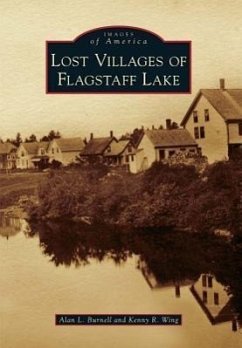Permanent settlers began arriving at the village of Flagstaff around the 1820s, drawn by its advantageous location along the Dead River floodplain and the availability of waterpower at the outlet to Flagstaff Pond. In 1923, the Maine legislature passed a bill condemning a 25-mile section of the upper Dead River Valley to inundation, causing the eventual permanent flooding of the villages of Flagstaff, Dead River, and Bigelow. The bill authorized the construction of a dam at the river narrows at Long Falls and the subsequent creation of Flagstaff Lake. The properties in these towns were obtained by the process of eminent domain, and residents were forced to relocate. In the spring of 1950, Flagstaff Lake was officially created when the gates in Long Falls Dam were closed. It remains a controversial project today.
Bitte wählen Sie Ihr Anliegen aus.
Rechnungen
Retourenschein anfordern
Bestellstatus
Storno

